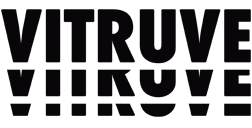12 de June de 2025
Designing Effective Strength and Conditioning Programs for College Athletes
Creating impactful strength and conditioning college programs goes beyond building strong athletes. It’s about integrating sport science, managing fatigue, and enhancing athletic longevity across seasons. At the collegiate level, athletes require precise programming, individualized attention, and tools that track performance in real time.
This guide outlines how college coaches can design and implement elite S&C programs to optimize power, resilience, and readiness in student-athletes.
Understand the College Athlete Profile
College athletes sit at the intersection of youth and elite performance. Most have advanced technical and tactical skill, but they’re still developing physically, emotionally, and academically. Your S&C program must:
- Respect academic and game load
- Integrate recovery and wellness habits
- Support injury prevention and performance
A successful college S&C program builds not only stronger athletes—but smarter ones.
Step 1: Build Around the Competitive Calendar
Your strength and conditioning college program must be periodized around the season:
- Off-season (8–12 weeks): Emphasize max strength, hypertrophy, and aerobic capacity
- Pre-season (4–6 weeks): Shift to power development, agility, and anaerobic work
- In-season (4–5 months): Focus on maintenance, joint integrity, and CNS freshness
- Post-season (2–4 weeks): Regeneration, mobility, and movement quality
Use velocity-based training to monitor load readiness and avoid overtraining.
Step 2: Apply LTAD and Individualization
Not all college athletes enter with the same physical literacy. Even in elite programs, disparities exist:
- Freshmen may need regression and basic movement re-education
- Upperclassmen may require advanced force-velocity profiling and targeted interventions
Use jump tests, bar velocity, or load-velocity profiles to personalize programming. Tools like the Vitruve Encoder and App allow real-time adjustments based on athlete readiness.
Step 3: Integrate Foundational Strength & Power Blocks
The core of your S&C program should include:
- Strength: trap bar deadlifts, front squats, pull-ups, barbell rows, RDLs
- Power: Olympic lifts (or regressions), jumps, med ball throws, contrast training
- Speed: resisted sprints, max velocity drills, multidirectional movement
- Conditioning: sport-specific intervals, tempo runs, circuits for aerobic development
Structure weekly microcycles (e.g., high CNS days, low volume tempo days) for adaptation.
Step 4: Manage Fatigue Proactively
College athletes balance travel, academics, and competition. Fatigue management is critical:
- Implement auto-regulation tools like bar speed tracking and RPE
- Conduct regular wellness check-ins (sleep, soreness, HRV)
- Reduce volume/intensity during midterms or congested competition weeks
Explore these strategies in our guide to fatigue management.
Step 5: Educate, Empower, and Build Buy-In
Elite college S&C programs are built on coach-athlete trust. Build that trust by:
- Explaining training goals and data use
- Providing athlete dashboards (e.g., velocity tracking or strength benchmarks)
- Offering feedback and progression updates
Use the Vitruve Teams App to monitor all athletes, manage large rosters, and keep progress visible.
Example Weekly Microcycle (Pre-Season)
| Day | Focus |
|---|---|
| Monday | Max Strength + Acceleration |
| Tuesday | Aerobic Tempo + Mobility |
| Wednesday | Power + Upper Body Strength |
| Thursday | Active Recovery + Core |
| Friday | Speed + Agility + Repeats |
| Saturday | Optional Lift + Conditioning |
Related Programs to Explore
If you’re looking to tailor S&C to specific sports, check out these collegiate-ready guides:
Final Thoughts
Designing effective strength and conditioning college programs means balancing science, sport, and the student experience. Through structured periodization, data-driven adjustments, and tools like Vitruve’s VBT system, coaches can maximize performance while reducing risk.
For a broader view on how to structure S&C over time, visit our guide to Strength and Conditioning Principles, Benefits and Programs.
